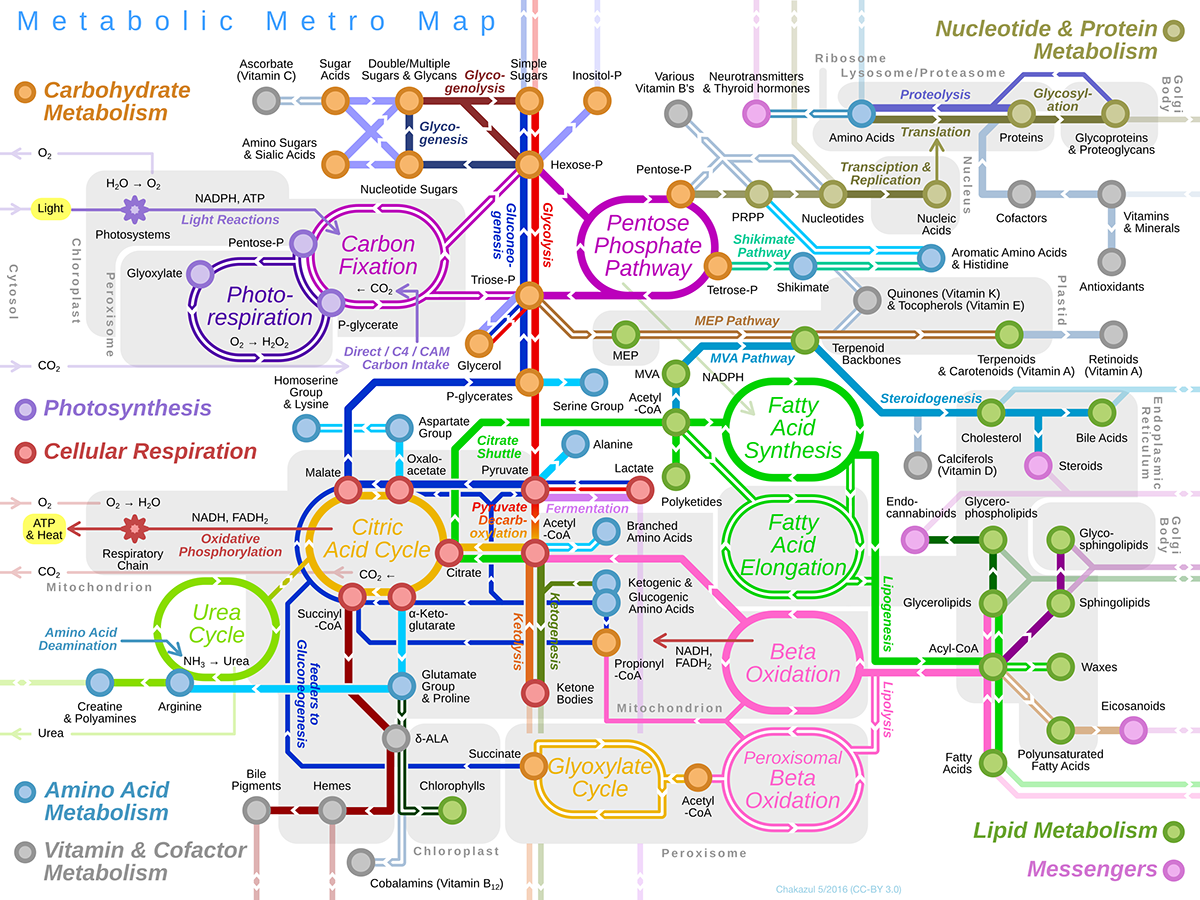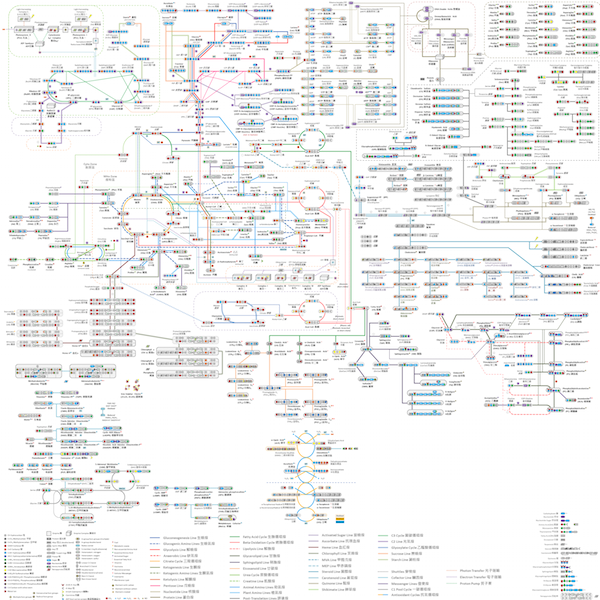Each of us is a miracle of biochemistry. Our cells are composed of a wide variety of organic materials, painstakingly synthesized and broken down every millisecond by an intertwined network of metabolic pathways. This concept itself, and the complexity of such a network, is not unlike the underground metro systems beneath each major city in the world. The similarities between a metabolic map and a metro map are uncanny -- the stops, the lines, the cycles, the shunts, the shuttles, the inter-cell / inter-city connections... and so on. It seems so natural for me to start this "Metro Map of Metabolism" project.
There are excellent professional maps that made this project possible (see the links below), but to condense them into one concise and accurate diagram, I've to re-learn all the organic chemistry from college class. The result is this overview map (more to come later).
As usual, I've published it in Wikipedia under creative commons license. A clickable verison can be seen at https://en.wikipedia.org/wiki/Metabolic_pathway (thanks to the help from T. Shafee and other wikipedians)

The busiest part of the map -- the interjunction between Glycolysis Line to the top, Ketogenesis Line to the bottom, Citric Acid Cycle to the left, and Lipid Lines to the right. This is also the most ancient part, probably already exist in the earliest lifeforms (or even before life) billions of years ago.

The central hub of the system -- from glucose (the primary fuel source) to ketone bodies (the secondary fuel source).

The entire M³ project ("Metro Map of Metabolism") is even more ambitious, with detailed maps for each pathway and a coding scheme for the chemical structures. Here is a glimpse of an earlier version. Stay tuned.

Online resources:


